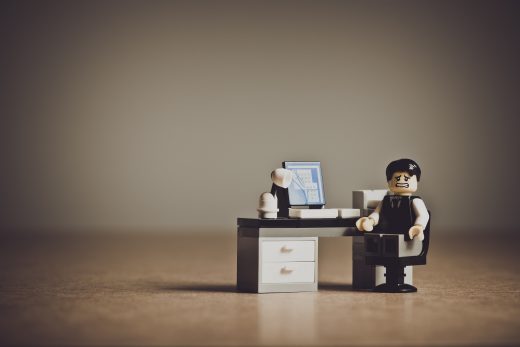What Returning to the “New Normal” at Work Will Really Look Like in 6 Months
Even though we’re entering the darkest period of the pandemic, there is finally glimpses of a light at the end of the tunnel.
Two vaccines seem to be very viable options for 2021.

Therapeutics are coming along–we’re getting smarter about how we treat people with COVID.
And testing is becoming more pervasive–and easier–every day.
So, from a work standpoint, it feels like if we can just get through the worst of this winter, we may see a different kind of worklife emerge in spring and summer.
Which means people returning to the workplace again.
Now, personally, I don’t have a “workplace” to return to (other than my local coffee shop), but I do have a keen interest in this topic as it impacts all of my clients and friends. So, not sure my opinion is the most credible, but I’ve long had thoughts on workplace culture and how and when employees get their jobs done.
Hootsuite’s Ryan Holmes recently wrote a great post on LinkedIn on this very topic, summarizing a number of interesting surveys he’s coordinated around the workplace during COVID and what’s next.
2021 is going to be an interesting year on many levels–hopefully, a much more positive year than 2020. But, it’s also going to be a huge year for workplace transformation. As people return to the workplace, it’s going to change–forever. In many ways, it already has.
But, I see a number of workplace changes occurring in the year ahead:
1 – People will become entrenched in two camps: Work from home vs. Work from the office.
Much like everything else in society, we’re living in a very black-and-white world. You’re either on one side–or the other. And, in the workplace world this will manifest itself in the “working remotely” vs. “working at the office” groups. You’ll fall in one or the other, and there will be little gray area (even though a lot of people hope to work 2-3 days in the office vs. 5). I just think there are too many people who still want to work in the office full-time–and those people tend to be in management positions. Meanwhile, the “work from home” crowd tends to be the rank-and-file. Just a generalization, but I’ve found that to be true over the years and I don’t think COVID has changed it all that much. Which leads me to…
2 – Those opting to work from home may be passed over for promotions.
Look, I’m firmly in the “work wherever you want to as long as you get your stuff done” camp. But, I’m also a realist. And the realist in me says people who are working remotely may get passed up for opportunities. Out of sight, out of mind. I’ve seen it happen in the past. And, we’re going to see it happen again. Probably not all the time, but those who show up will probably be rewarded more than those who work from home. Sad, but I think it’ll be true. Hope I’m wrong!
3 – WFH perks will expand
As more people work from home full-time or part-time, companies will be forced to think about “work from home” perks and benefits. Right now, it feels like companies are just waiting to see what happens. But, what will happen is that a decent amount of the workforce is going to want to do this work-from-home thing a lot. Which means companies will need to start offering benefits that line up with that behavior. That means paying for additional monitors and desk chairs people need for home offices (astounded this isn’t already happening, really). It means paying for new and different wellness options (stipends for Peloton bikes, golf memberships, etc.). The perks can–and should–change in 2021.
4 – Companies will figure out how to build remote culture
If you look at the Holmes survey link above, you’ll see this is the biggest opportunity for companies coming out of the pandemic. I’m not sure what this looks like in 2021, but companies will need to figure out how to build culture long-term with people who are in the office, and those who are not. This could mean holding in-person monthly events to at least convene people face-to-face once in a while. It could mean organizing more off-site meet-ups and events designed to build camaraderie by neighborhood or suburb. What about a Wed. morning coffee meet-up for employees living in Maple Grove? Companies are going to have to get creative–and I don’t think that means doing it all virtually. There’s going to have to be an in-person component to this, even for those working remotely.
5 – Companies need to figure out how to help employees better manage their time and productivity
Despite what one of Holmes surveys said, I think most employees need help with this. According to the survey, 63% said they were a great boss! However, anecdotally, judging from my past experiences, that just can’t be true. Some people are good at working independently–most are not. Yes, you cut out the water cooler talk and other chatting you would do in the office but I also think most people are easily distracted. Go take a peek at Twitter or Facebook sometime–you’ll see many employees spending time there during the day–and that’s just the online behavior we can see publicly. Of course, people are going to say “I’m a great boss!” when asked if they’re more productive at home. However, the truth lies somewhere in the middle. And companies would be wise to figure out training and tools to help employees learn strategies to do just that.
Business & Finance Articles on Business 2 Community
(23)


